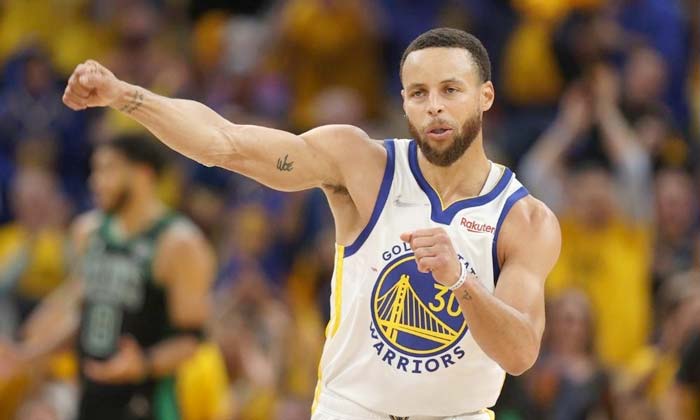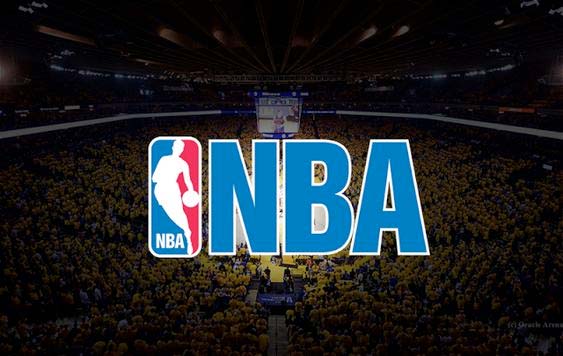Basketball is one of the most popular sports in the world, with millions of fans tuning in to watch the NBA and WNBA games every year. However, have you ever wondered how these leagues operate and generate revenue?
In this article, we will take a closer look at the business of basketball and explore the ways in which the NBA and WNBA make money.
How the NBA and WNBA Operate and Generate Revenue:
The National Basketball Association (NBA) is a men’s professional basketball league in North America, consisting of 30 teams. The Women’s National Basketball Association (WNBA) is the women’s professional basketball league in the United States, also consisting of 12 teams. Both leagues operate similarly, with revenue generated through various sources, including broadcasting rights, merchandise sales, ticket sales, and sponsorships.

The NBA and WNBA are two of the most popular professional sports leagues in the world. Both leagues have a large fan base and generate significant revenue through various sources. In this guide, we will take a closer look at how these leagues operate and generate revenue.
League Structure
The NBA and WNBA have a similar structure. Both leagues are divided into conferences and divisions, with teams competing against each other in regular season games. The top teams in each conference qualify for the playoffs, with the winners competing for the league championship.
Broadcasting Rights
One of the most significant sources of revenue for the NBA and WNBA is broadcasting rights. The leagues have signed multi-billion dollar contracts with various television networks to air their games, both domestically and internationally. These contracts bring in a significant portion of revenue for both leagues.
Merchandise Sales
Another way the NBA and WNBA generate revenue is through the sale of merchandise. From jerseys and hats to keychains and water bottles, fans love to show their support for their favorite teams by purchasing merchandise. The leagues also receive a percentage of sales from licensed products sold by third-party retailers.
Ticket Sales
Ticket sales are a major source of revenue for the NBA and WNBA, with fans purchasing tickets to watch their favorite teams play in person. Teams can earn additional revenue by hosting events such as concerts or conferences at their venues.
Sponsorships
The NBA and WNBA also generate revenue through sponsorships. Companies pay to have their logos displayed on players’ jerseys, in arenas, and during broadcasts. The leagues also partner with companies to create promotional events and campaigns.
Player Salaries
Player salaries are a significant expense for the NBA and WNBA. Both leagues have salary caps that limit how much teams can pay their players. The salary cap is determined by the league’s revenue, with a percentage of revenue allocated to player salaries.
Revenue Sharing
Revenue sharing is a way for the NBA and WNBA to distribute revenue among teams. The leagues have revenue sharing agreements that allow smaller market teams to receive a portion of the revenue generated by larger market teams. This helps to ensure that all teams have a chance to compete and remain financially viable.
Expansion
Both the NBA and WNBA have expanded in recent years, with new teams being added to the leagues. Expansion teams pay an entry fee to join the league, which generates revenue for the existing teams.
The NBA and WNBA are successful businesses that generate revenue through various sources, including broadcasting rights, merchandise sales, ticket sales, and sponsorships. These revenues allow the leagues to continue operating and provide fans with high-quality basketball games.
? ?️ Play Basketball Stars for free
Broadcasting Rights
One of the most significant sources of revenue for the NBA and WNBA is broadcasting rights. The leagues have signed multi-billion dollar contracts with various television networks to air their games, both domestically and internationally. These contracts bring in a significant portion of revenue for both leagues.
Broadcasting rights are a critical source of revenue for the NBA and WNBA. The leagues have signed lucrative contracts with various television networks, both domestically and internationally, to air their games. In this guide, we will take a closer look at how broadcasting rights work and how they generate revenue for the leagues.
The Importance of Broadcasting Rights
Broadcasting rights are critical to the success of professional sports leagues like the NBA and WNBA. These rights allow the leagues to reach a wider audience and generate significant revenue. Television networks pay the leagues for the right to air their games, and in turn, the networks can charge advertisers for commercials during the broadcasts.
Domestic Broadcasting Rights
The NBA and WNBA have signed multi-billion dollar contracts with major U.S. television networks such as ABC, ESPN, and TNT to air their games. These networks typically air games on a weekly basis during the regular season, with additional games aired during the playoffs. The leagues also have contracts with regional sports networks that broadcast games for local markets.
International Broadcasting Rights
The NBA and WNBA have a large international fan base, and as a result, they have signed contracts with television networks in various countries around the world to air their games. The leagues have a global broadcast partner, NBA League Pass, which allows fans to watch live and on-demand games from anywhere in the world.
Revenue Sharing
Broadcasting rights generate significant revenue for the NBA and WNBA, but this revenue is shared among the teams in the leagues. The revenue sharing agreements allow smaller market teams to receive a portion of the revenue generated by larger market teams. This helps to ensure that all teams have the resources to compete and remain financially viable.
Streaming

In addition to traditional television broadcasting, the NBA and WNBA have also embraced streaming services as a way to reach fans. The leagues have partnered with companies like Amazon, Hulu, and YouTube to offer live and on-demand games to fans who prefer to stream content online.
Future of Broadcasting Rights
The NBA and WNBA will continue to rely on broadcasting rights as a major source of revenue in the future. With the rise of streaming services and changing consumer preferences, the leagues will need to adapt and find new ways to reach fans and generate revenue.
Broadcasting rights are a critical source of revenue for the NBA and WNBA. These contracts with television networks allow the leagues to reach a wider audience and generate significant revenue that is shared among the teams in the leagues. The future of broadcasting rights is likely to involve more streaming and online content, as the leagues adapt to changing consumer preferences.
Merchandise Sales
Another way the NBA and WNBA generate revenue is through the sale of merchandise. From jerseys and hats to keychains and water bottles, fans love to show their support for their favorite teams by purchasing merchandise. The leagues also receive a percentage of sales from licensed products sold by third-party retailers.
Merchandise sales are a major source of revenue for the NBA and WNBA. The leagues have a wide range of products available for fans to purchase, including jerseys, hats, t-shirts, and other apparel, as well as accessories such as phone cases and keychains. In this guide, we will take a closer look at how merchandise sales work and how they generate revenue for the leagues.
The Importance of Merchandise Sales
Merchandise sales are important to the most popular sports brands because they provide a direct connection between the leagues and their fans. When fans wear team apparel or use team-branded products, they become walking advertisements for the leagues. In addition, merchandise sales allow fans to show their support for their favorite teams and players.
Licensing
The NBA and WNBA do not produce merchandise themselves. Instead, they license their logos and team names to third-party manufacturers who produce the products and pay royalties to the leagues. The leagues carefully select their licensing partners to ensure that the products meet their quality standards and align with their brand image.
Retail Partnerships
The leagues also partner with retailers to sell their merchandise. This includes traditional brick-and-mortar stores as well as online retailers such as Amazon and Fanatics. These retail partnerships allow the leagues to reach a wider audience and sell merchandise in a variety of locations.
Player Endorsements
The NBA and WNBA also rely on player endorsements to drive merchandise sales. Popular players who have a strong following among fans can significantly boost sales of their jerseys and other merchandise. The leagues often feature star players in their marketing campaigns to increase awareness and interest in their merchandise.
Global Market
Merchandise sales are not limited to the domestic market. The NBA and WNBA have a large international fan base, and as a result, they sell merchandise in countries around the world. The leagues have also established partnerships with local manufacturers and retailers in various countries to ensure that their products are available to fans globally.
Future of Merchandise Sales
Merchandise sales will continue to be an important source of revenue for the NBA and WNBA in the future. The leagues will need to stay on top of changing consumer preferences and market trends to ensure that their products remain relevant and in demand. This may include the introduction of new types of products and partnerships with innovative companies.
Merchandise sales are a major source of revenue for the NBA and WNBA. The leagues rely on licensing agreements, retail partnerships, player endorsements, and their global fan base to sell a wide range of products to fans. The future of merchandise sales will involve adapting to changing consumer preferences and market trends to ensure continued success.
Ticket Sales
Ticket sales are a major source of revenue for the NBA and WNBA, with fans purchasing tickets to watch their favorite teams play in person. Teams can earn additional revenue by hosting events such as concerts or conferences at their venues.
Ticket sales are another significant source of revenue for the NBA and WNBA. Fans purchase tickets to attend games in person and experience the excitement and energy of live basketball. In this guide, we will take a closer look at how ticket sales work and how they generate revenue for the leagues.
Types of Tickets
The NBA and WNBA offer several types of tickets to fans, including single game tickets, season tickets, and group tickets. Single game tickets allow fans to purchase tickets for individual games, while season tickets provide admission to all home games for the season. Group tickets are sold to organizations and businesses who want to bring a group of people to a game.
Pricing
Ticket prices vary depending on several factors, including the popularity of the teams playing, the time of the game, and the location of the seats. Premium seating options, such as luxury suites and club seats, are available for fans who want a more exclusive experience.
Distribution
The NBA and WNBA sell tickets through various distribution channels, including their own websites, third-party ticketing companies, and ticket resale websites. They also partner with local businesses and organizations to sell tickets in person.
Ticket Resale
Ticket resale is a common practice in the sports industry, and the NBA and WNBA allow fans to resell tickets through authorized ticket resale platforms. The leagues also offer their own official ticket resale platform to provide a safe and secure way for fans to buy and sell tickets.
Secondary Market
The secondary market for tickets can also generate revenue for the leagues. When tickets sell out for popular games, scalpers and ticket brokers often purchase tickets and resell them at a higher price. The leagues do not receive any revenue from these secondary market transactions, but the increased demand for tickets can drive up prices and increase the perceived value of attending games.
Future of Ticket Sales
The COVID-19 pandemic had a significant impact on ticket sales for the NBA and WNBA. With restrictions on in-person attendance and reduced capacity at games, the leagues had to adapt their ticket sales strategies. In the future, ticket sales will likely continue to be an important source of revenue for the leagues. However, they may need to consider new approaches to ticket pricing and distribution to ensure that fans feel comfortable attending games in person.
Ticket sales are a major source of revenue for the NBA and WNBA. The leagues offer a variety of ticket options to fans, including single game tickets, season tickets, and group tickets. Ticket prices vary depending on several factors, and the leagues sell tickets through various distribution channels. The secondary market for tickets can also generate revenue, but the leagues must adapt to changing market conditions to ensure continued success.
Sponsorships
The NBA and WNBA also generate revenue through sponsorships. Companies pay to have their logos displayed on players’ jerseys, in arenas, and during broadcasts. The leagues also partner with companies to create promotional events and campaigns.
Sponsorships are another key source of revenue for the NBA and WNBA. In this guide, we will explore how sponsorships work and how they contribute to the financial success of the leagues.
Types of Sponsorships
The NBA and WNBA offer several types of sponsorships to companies and organizations, including league-wide sponsorships, team sponsorships, and player sponsorships. League-wide sponsorships provide companies with the opportunity to promote their brand to a large audience, while team sponsorships allow companies to connect with fans of specific teams. Player sponsorships involve individual players endorsing products or brands.
Benefits of Sponsorships
Sponsorships provide benefits for both the leagues and the companies that participate in them. For the NBA and WNBA, sponsorships generate revenue that can be used to invest in the leagues and improve the fan experience. Sponsorship agreements also provide exposure for the leagues, helping to build brand recognition and attract new fans. For companies, sponsorships offer the opportunity to connect with fans and increase brand awareness.
Sponsorship Activation
Sponsorship activation involves the creation and implementation of marketing campaigns that leverage the sponsorship agreement. This can include in-arena signage, digital and social media campaigns, and product integration. The NBA and WNBA work closely with their sponsors to ensure that they receive maximum exposure and value from their sponsorship investment.
Sponsorship Trends
In recent years, there has been a trend towards more socially conscious sponsorships in the sports industry. The NBA and WNBA have been at the forefront of this trend, partnering with companies that share their values and support causes such as social justice and environmental sustainability.
Future of Sponsorships
As the sports industry continues to evolve, so too will the landscape of sponsorships. The NBA and WNBA will likely continue to seek out new and innovative sponsorship opportunities that provide value for both the leagues and their partners. They may also need to adapt to changes in the market, such as the rise of esports and virtual events, to ensure that their sponsorship programs remain relevant and effective.
Sponsorships are a critical source of revenue for the NBA and WNBA. They offer benefits for both the leagues and the companies that participate in them, including increased exposure and brand recognition. Sponsorship activation is an important component of any sponsorship agreement, and the leagues work closely with their partners to ensure that they receive maximum value. As the sports industry continues to evolve, the NBA and WNBA will need to stay ahead of the curve to ensure continued success in their sponsorship programs.
Conclusion
The NBA and WNBA are successful businesses that generate revenue through a variety of sources, including broadcasting rights, merchandise sales, ticket sales, and sponsorships. These revenues allow the leagues to continue operating and provide fans with high-quality basketball games.
FAQ:
The NBA generated $8.3 billion in revenue in the 2019-2020 season, while the WNBA generated $60 million in revenue in the 2020 season.
NBA players make money through their contracts with teams, endorsement deals, and other ventures such as investments or media appearances.
Yes, WNBA players make significantly less than NBA players. The average WNBA player salary was $130,000 in the 2020 season, while the average NBA player salary was $7.7 million.
Also read :
- The Art of Shooting: Master Tips and Techniques for Improving Your Basketball Shot
- UConn Dominates Gonzaga to Secure First Final Four in 9 Years
- Who is Ja Morant’s Sister? Learn About Teniya Morant’s Personal and Professional Life
- How to Dress Like Your Favorite NBA Stars: Basketball Fashion Tips
- March Madness Elite Eight Predictions and Player Props for Today
- Shocking upset: NCAA men’s tournament sees No. 1 seed knocked out in early rounds
- Utah’s Jenna Johnson Laments Missed FTs in Loss to LSU, Looks to Bounce Back
- Alabama Basketball: Nate Oats Leads Crimson Tide to Sweet 16
- Meet the American Who Coined “March Madness”: Illinois High School Hoops Pioneer H.V. Porter
- Memphis Grizzlies’ Ja Morant Makes Impact Off the Bench in Return from Suspension






















